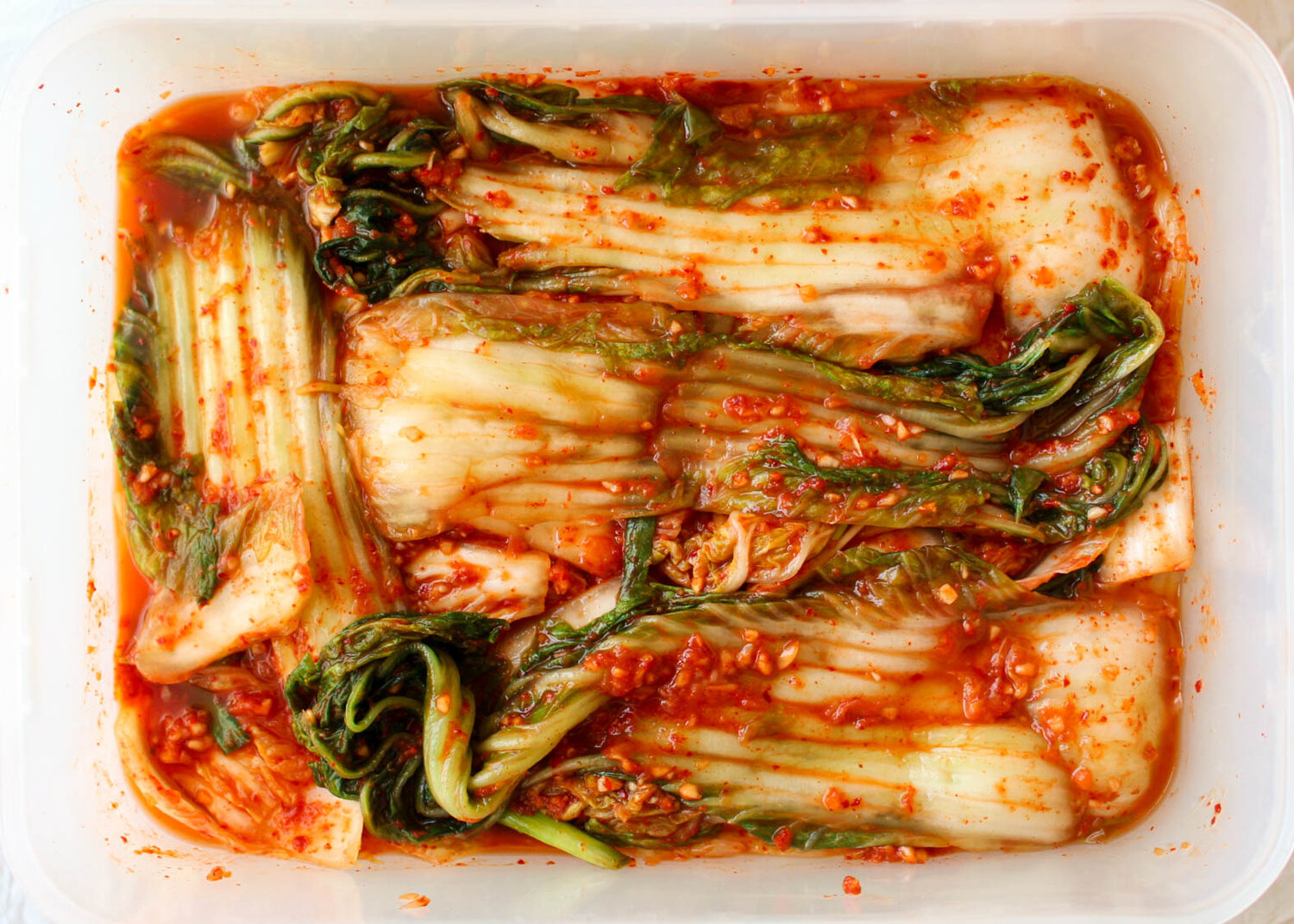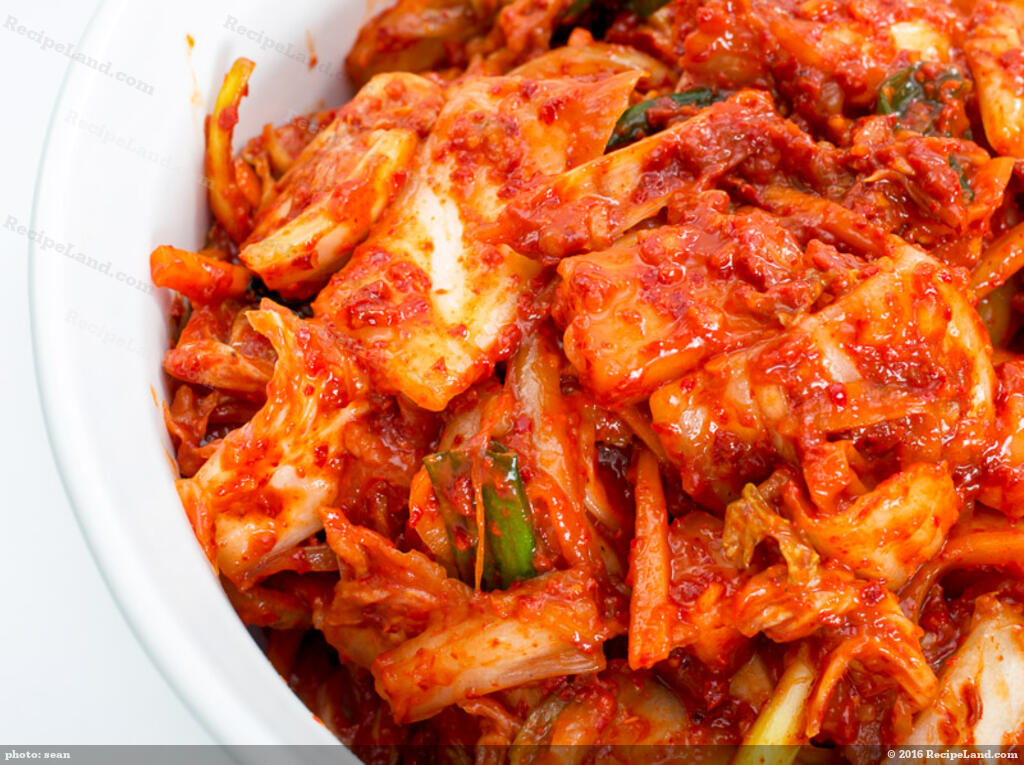Kimchi, the beloved Korean staple, is more than just a dish; it’s a culinary art form steeped in history and cultural significance. Its unique blend of spicy, sour, and savory flavors has captivated palates worldwide, making it a global culinary sensation.
In this comprehensive guide, we embark on a culinary journey to explore the authentic kimchi recipe, its historical roots, essential ingredients, and the fascinating variations that have evolved over time.
From its humble beginnings as a way to preserve vegetables during the cold Korean winters, kimchi has evolved into a diverse array of regional specialties, each with its own distinct taste and appearance. Whether you’re a seasoned kimchi enthusiast or a curious culinary explorer, this guide will provide you with the knowledge and inspiration to create your own authentic kimchi at home.
Kimchi’s Historical Roots
Kimchi, a staple of Korean cuisine, boasts a rich history deeply entwined with Korean culture and identity. Its origins can be traced back to ancient times, with evidence suggesting its existence as early as the 7th century BCE during the Three Kingdoms period.
Cultural Significance and Symbolism
Kimchi holds immense cultural significance in Korea. It is considered a national dish, representing the country’s culinary heritage and embodying the Korean spirit of resilience and adaptability. Kimchi is often served at every meal, symbolizing family, community, and tradition.
Evolution of Recipes
Over the centuries, kimchi recipes have evolved and diversified, influenced by regional variations and the availability of ingredients. While the core ingredients remain largely unchanged, regional variations exist in terms of spiciness, sourness, and the addition of specific vegetables or seafood.
Essential Ingredients for Authentic Kimchi
Kimchi, a beloved staple in Korean cuisine, owes its distinctive flavor and nutritional value to a carefully curated blend of ingredients. Understanding these key components is crucial for crafting an authentic kimchi experience.
The foundation of kimchi lies in its vegetables, primarily napa cabbage and Korean radish. Napa cabbage, with its crisp texture and mild flavor, provides the backbone of the dish. Korean radish, known for its pungency and slight sweetness, adds a spicy kick and a vibrant color.
Spices and Seasonings
A symphony of spices and seasonings elevates kimchi’s flavor profile. Gochugaru, a coarse Korean chili powder, is the heart of the spice blend, imparting a vibrant red hue and a balanced heat. Other seasonings, such as garlic, ginger, and jeotgal (fermented seafood), contribute umami, depth of flavor, and a slight funkiness.
Fermentation Agents
Kimchi’s unique fermentation process is orchestrated by a trio of fermentation agents: lactic acid bacteria, yeast, and mold. Lactic acid bacteria, responsible for the characteristic sourness, dominate the early stages of fermentation. Yeast, contributing to the bubbling and effervescence, adds a touch of sweetness and complexity.
Mold, while less prominent, imparts a subtle earthiness and umami.
Traditional Methods of Kimchi Preparation

The preparation of kimchi is a multi-step process that involves salting, rinsing, seasoning, and fermenting the vegetables. The process begins with the preparation of the vegetables, which are typically napa cabbage, radishes, and scallions. The vegetables are washed and cut into bite-sized pieces.
The next step is to salt the vegetables. This helps to draw out the water from the vegetables and create a brine. The vegetables are salted for several hours, or even overnight, depending on the desired level of saltiness. After salting, the vegetables are rinsed thoroughly to remove excess salt.
Once the vegetables have been rinsed, they are seasoned with a variety of ingredients, including garlic, ginger, red pepper powder, and fish sauce. The vegetables are mixed thoroughly to ensure that they are evenly coated with the seasonings.
The final step in the kimchi-making process is fermentation. The vegetables are placed in a jar or container and sealed. The jar is then stored in a cool, dark place for several weeks. During fermentation, the lactic acid bacteria in the vegetables convert the sugars into lactic acid, which gives kimchi its characteristic sour flavor.
Maintaining Proper Temperature and Humidity
The temperature and humidity during fermentation are critical to the success of the kimchi-making process. The ideal temperature for fermentation is between 50 and 60 degrees Fahrenheit. If the temperature is too high, the fermentation process will be too fast and the kimchi will become too sour.
If the temperature is too low, the fermentation process will be too slow and the kimchi will not develop its full flavor.
The humidity during fermentation should be between 70 and 80%. If the humidity is too low, the kimchi will become dry and tough. If the humidity is too high, the kimchi will become slimy.
Variations and Regional Styles of Kimchi
Kimchi is a ubiquitous staple in Korean cuisine, and its flavors and characteristics vary widely across the country. Regional variations in kimchi reflect the diverse geography, climate, and local ingredients found in different parts of Korea.
Regional Variations
Some of the most notable regional variations of kimchi include:
- Baechu kimchi: This is the most common type of kimchi, made with napa cabbage. It is typically seasoned with gochugaru (Korean chili powder), garlic, ginger, and other spices.
- Kkakdugi: This kimchi is made with diced radishes. It is often less spicy than baechu kimchi and has a refreshing, crunchy texture.
- Dongchimi: This kimchi is made with white kimchi and a variety of vegetables, such as carrots, radishes, and onions. It is typically served as a soup or side dish.
In addition to these regional variations, there are also many local variations of kimchi. Each region of Korea has its own unique take on this beloved dish, and there is no single “correct” way to make kimchi.
Health Benefits of Kimchi
Kimchi is a nutritional powerhouse, boasting an array of vitamins, minerals, and beneficial compounds. Its fermentation process enhances its nutritional profile, creating a food rich in probiotics, antioxidants, and other health-promoting substances.
Probiotics and Gut Health
Kimchi is renowned for its high concentration of probiotics, live microorganisms that benefit the gut microbiome. These probiotics aid in digestion, strengthen the immune system, and reduce the risk of certain diseases.
Antioxidant Properties
Kimchi contains a wealth of antioxidants, such as vitamin C, beta-carotene, and flavonoids. These compounds protect cells from damage caused by free radicals, reducing the risk of chronic diseases like heart disease and cancer.
Other Health Benefits
Studies have linked kimchi consumption to various health benefits, including:
- Weight management
- Improved cholesterol levels
- Reduced inflammation
- Protection against certain types of cancer
Research continues to explore the potential health benefits of kimchi, highlighting its role as a functional food that promotes overall well-being.
Kimchi in Modern Cuisine
Kimchi’s culinary prowess extends beyond traditional Korean dishes. In recent years, it has emerged as a versatile ingredient in contemporary cooking, inspiring innovative culinary creations and captivating global palates.
Kimchi’s unique blend of flavors and textures has made it a sought-after ingredient in modern cuisine. Chefs worldwide are experimenting with kimchi, incorporating it into a diverse range of dishes, sauces, and condiments.
Kimchi-Inspired Dishes
Kimchi’s versatility shines through in various modern dishes. From kimchi pancakes to kimchi fried rice, kimchi’s spicy and tangy flavor adds a distinctive touch to familiar dishes. Its crunchy texture complements salads, sandwiches, and wraps, adding an element of surprise and complexity.
Sauces and Condiments
Kimchi’s versatility extends to sauces and condiments. Kimchi mayonnaise, for instance, combines the creamy richness of mayonnaise with the spicy tang of kimchi, creating a unique dipping sauce for everything from fries to sushi. Kimchi salsa, on the other hand, brings a Korean twist to Mexican cuisine, adding a spicy kick to tacos and burritos.
Global Culinary Ingredient
Kimchi’s popularity as a global culinary ingredient continues to soar. Its unique flavor profile and health benefits have made it a staple in many international kitchens. From Michelin-starred restaurants to home cooks, kimchi is embraced for its ability to elevate dishes and add a touch of Korean culinary heritage to any cuisine.
Outcome Summary

In conclusion, the authentic kimchi recipe is a testament to the culinary ingenuity and cultural heritage of Korea. Its unique flavor profile, versatility, and potential health benefits have made it a beloved dish around the world. Whether you choose to follow a traditional recipe or experiment with modern variations, creating your own kimchi is a rewarding experience that will introduce you to the rich culinary traditions of Korea.
Common Queries
What is the key ingredient that gives kimchi its distinctive sour flavor?
Lactic acid bacteria, produced during the fermentation process, is responsible for kimchi’s characteristic sourness.
Can kimchi be made without gochugaru (Korean chili powder)?
Yes, while gochugaru is a common ingredient in many kimchi recipes, it is possible to make kimchi without it. The resulting kimchi will have a milder flavor.
How long does kimchi need to ferment?
The fermentation time for kimchi varies depending on the desired level of sourness. It typically takes around 2-3 weeks at room temperature, but can be fermented for longer for a more intense flavor.
Is kimchi a good source of probiotics?
Yes, kimchi is a rich source of probiotics, which are beneficial bacteria that support gut health.
Can kimchi be stored in the freezer?
Yes, kimchi can be stored in the freezer for up to 6 months. However, freezing may slightly alter the texture and flavor.
